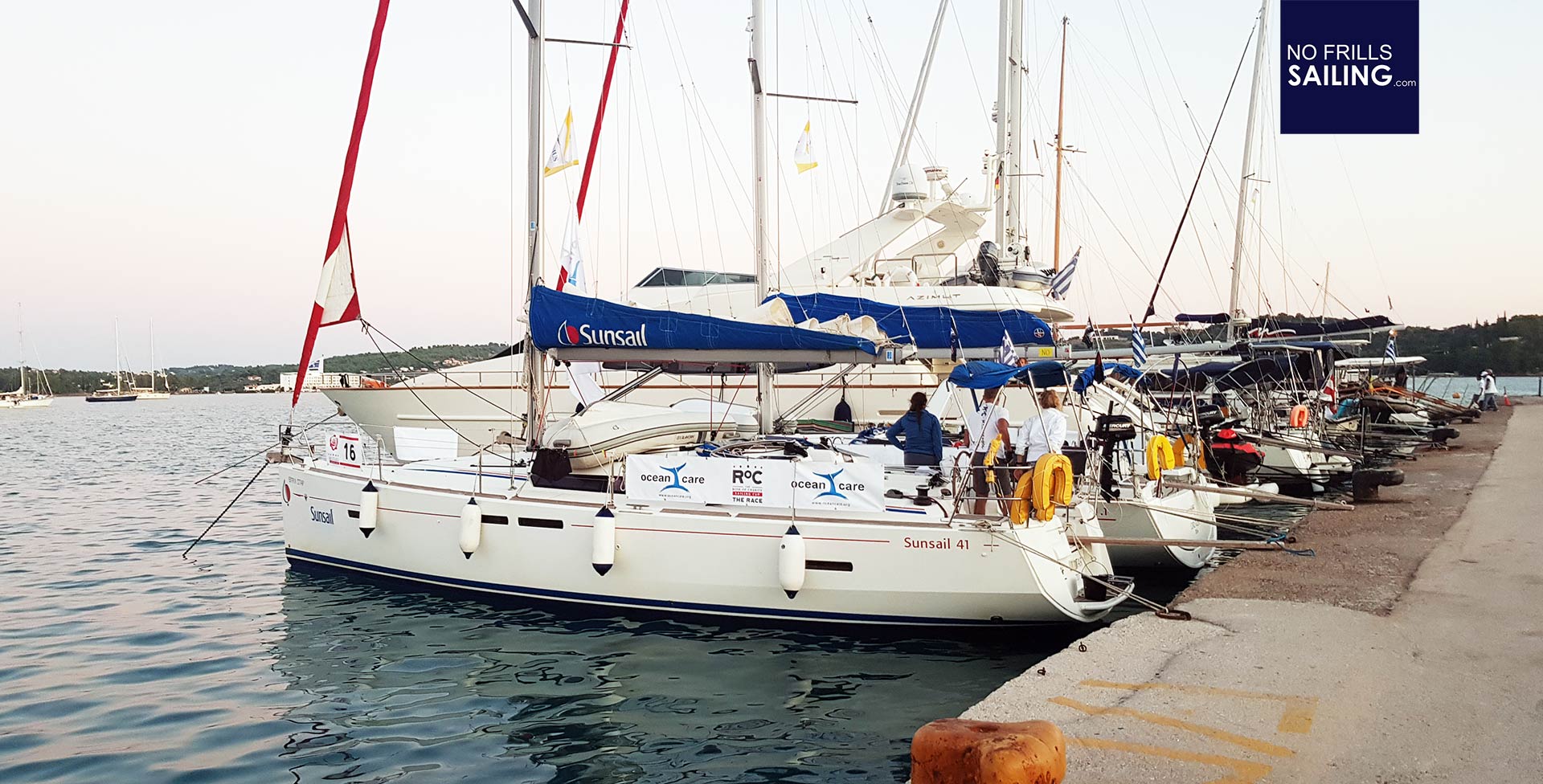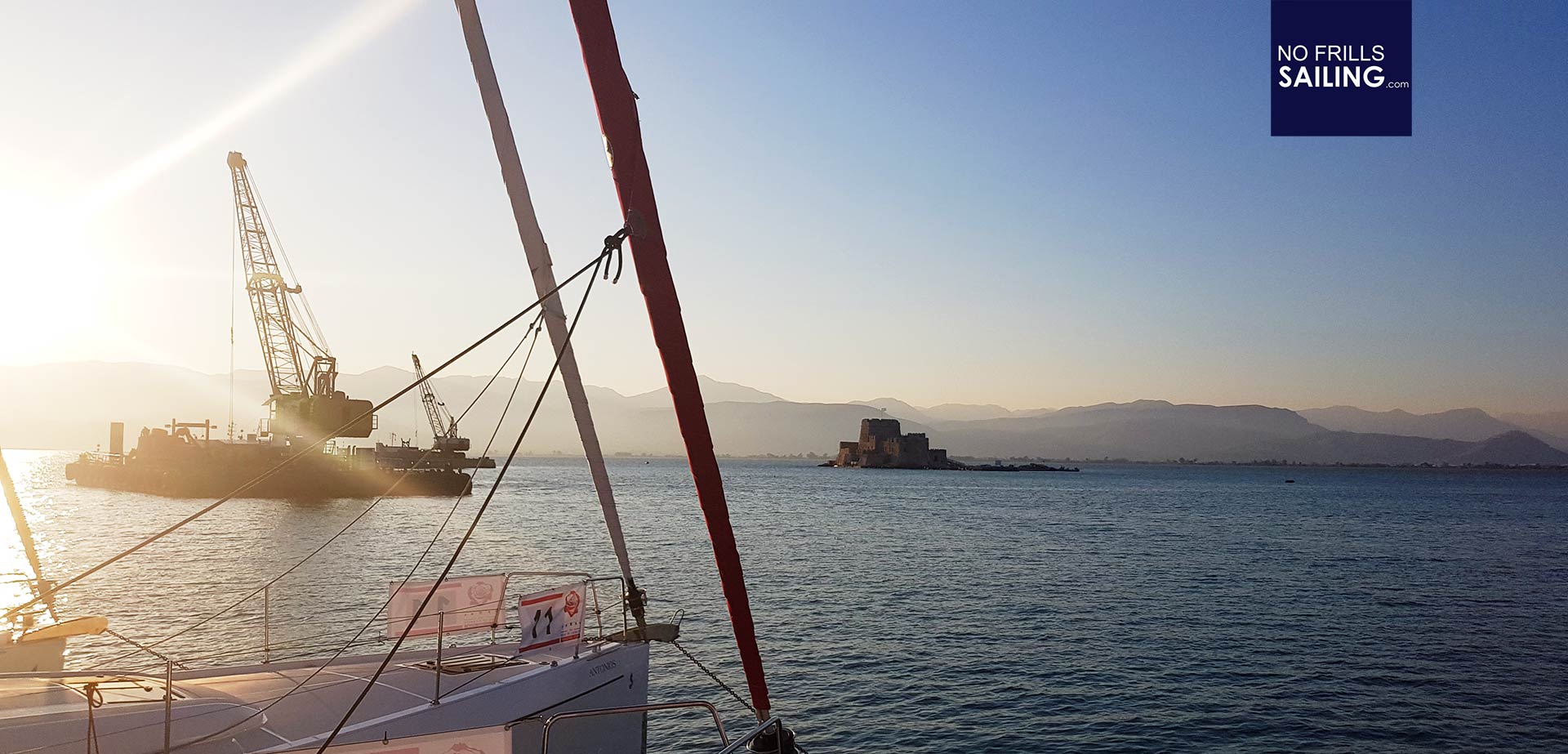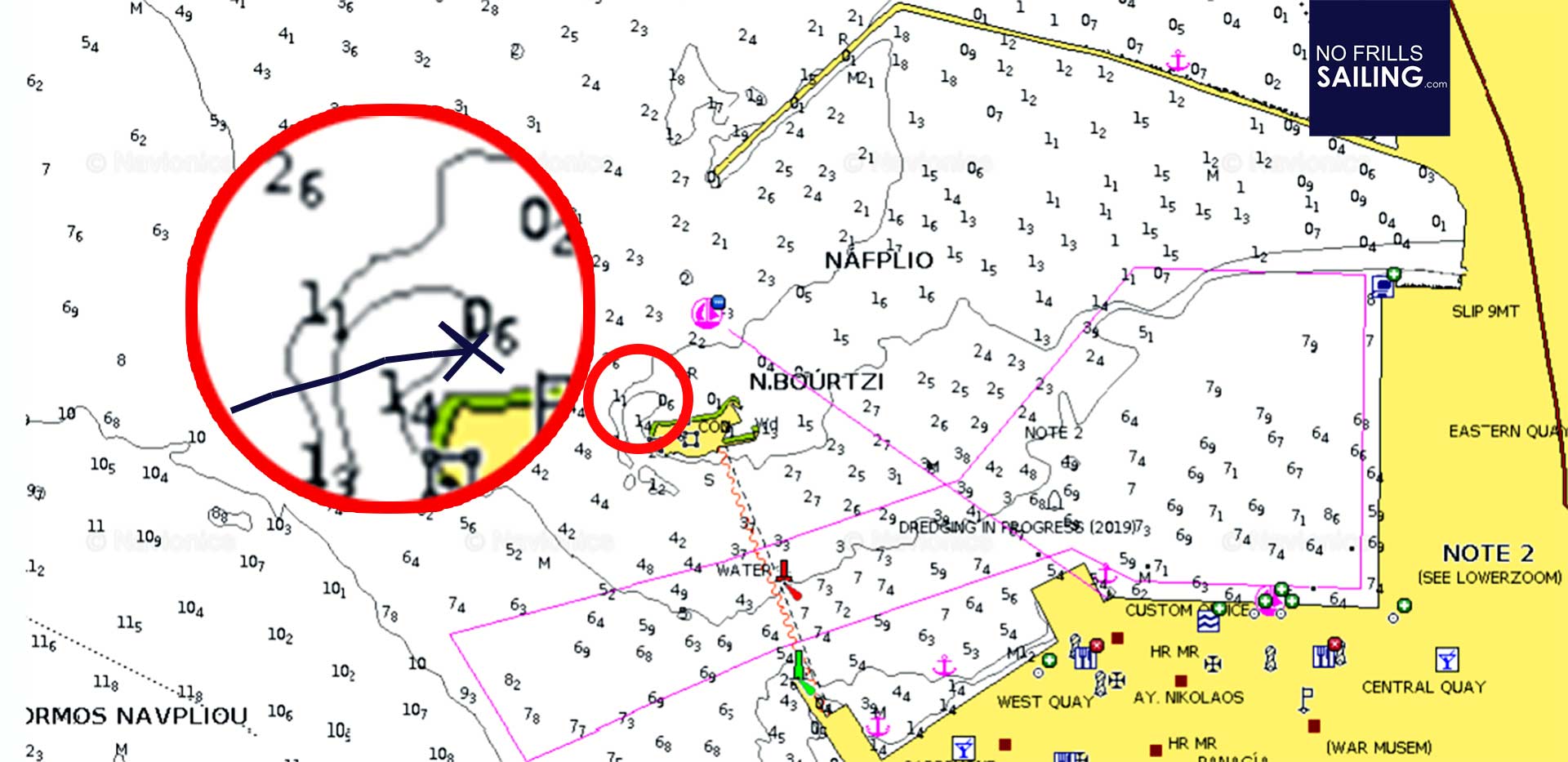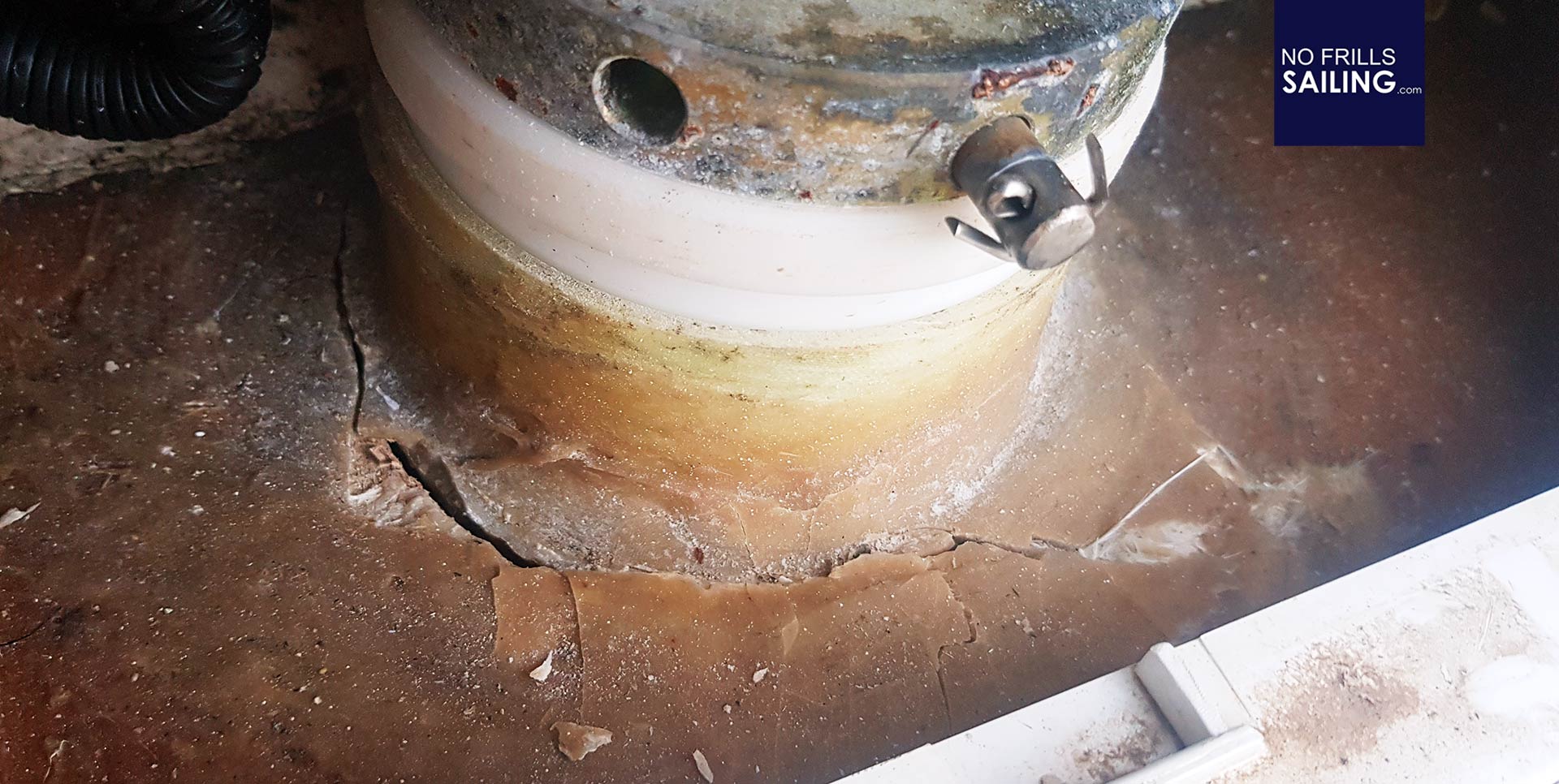This is maybe one of the hardest articles to date. To write about this incident is kind of disturbing because naturally one does not like to openly discuss failures and mishaps which are caused by oneself. In this, I´d like to talk about my first (and hopefully my last!) grounding which took place during the VIP-regatta last month. I thought long about this but I feel that in discussing this event I might be able to help other skippers to prevent themselves from experiencing the same.

So, my grounding-story is a perfect example of this common phrase, wildly used everyday: “A concatenation of unfortunate events”. Well, what does it mean? What does it really mean and what can we draw from this in order to become better skippers? For me, this horrible event was a trigger to analyse what happened and to draw some conclusions. As a skipper, you must be – at any time – in control of the situation, acting instead of re-acting and preventing instead of repairing. Let´s see what happened.
A concatenation of unfortunate events – in real life
At first, very classical, the starting situation didn´t feel awkward or dangerous in any way. Our boat, the Sunsail 41, just finished the second race day and what a race day it was! We had fought for hours very hard, trimmed the sails and steered exactly due course, we came in third that day and once crossing the finish hell broke loose. We yelled, we celebrated – we were happy! Everybody let go of the tension and the determination, we were loud, singing, dancing: We felt like winners! I had the sails taken in, started the engine and pointed the bow towards the harbor: “Let´s be in fast!”, I said because wind was increasing and some 19 other boats were due to arrive, I wanted to tie up our boat before the big hustle would begin.

Of course I knew the harbor having studied the charts before we left earlier today. Nafplion harbor is a bay. In the middle of the may a small island houses a fortress. You enter the harbor with the fortress on port side – never with the fortress on the righthand side! Well, wit wind really increasing (more than 20 knots) and howling in the rigging, I activated autopilot to help fitting the fenders. When I returned to the wheel and wanted to switch off the auto, it didn´t react. I tried three times by the autopilot remained engaged. So I reduced speed – because we headed straight towards the harbor´s breakwater – and sent down one of the crew to switch off electronic devices at the main switch panel, which was done promptly and the autopilot disengaged.

Somehow that event threatened the crew because the other turned grey. From high-life celebration to “wow, what was that?”. Now, right in the fairway to the pontoon a dredger moored and worked to maybe deepen the waterway. In front of the ship a big red buoy was visible. I had the boat moving along very slow. With wind up and howling and the crew still puzzled by the malfunction, this situation somehow created further derangement. My crew mate rashly announced “It´s closed! See – it´s closed!” – and yes, it looked awkward! “See the catamaran over there!”, she yelled and pointed to a cat entering the harbor: “Follow him!” Well, with all these things happening before, I became so unsure of the situation that I turned the wheel, left the waterway, steered past the fortress and entered the harbor following that catamaran. We were doomed.
Grounding a sailing yacht: Damage done
As eletrconics still deactivated, the boat didn´t had chart plotter nor sounding available so I couldn´t see the depth decreasing. I sent my mate to the bow to ready anchor for landing, as she yelled back: “It looks very shallow here …!” – and then the boat started to glide over sand, reducing speed. I absolutely instantly realized that we were hitting ground, put the engine to reverse and full throttle, yelled “All hands, hold tight! We´re aground!”. The boat slowly decreased speed, then I felt the keel freeing itself. We were swimming again. What to do now? As the catamaran (which was landing right now) was coming in some 100 metres to our left (and no chart plotter to confirm) I assumed that there might be deeper water, so I turned the rudder and had the boat steamed forward. I felt it gliding onto sand again, gave full throttle because I thought it was just a small stripe of sand – and with a “boom!” we were aground for sure. No maneuver would help, the boat sat on sand.

Switching off the engine, I ordered all hands to the cockpit. I dashed down to check for keel bolts (all okay) and the bilge and engine room for possible leaks (all okay). Then I had the “Mayday” announced via VHF to call in assistance which was granted immediately. After some 10 minutes a rib arrived (technical crew of our race). Now they took over. They handed over a towing line and told me to fit it onto a rear clamp. Which I though was awkward because you ought to tow a boat always bow first – the keel is like a plow when going astern, you cannot free a sailing boat by towing it backwards?! But they insisted, so I complied. Of course, twenty (!) minutes of violent rocking and pulling the yacht didn´t change the situation at all. I had to go full throttle backwards, nothing changed. Instead, I yelled at the crew and repeatedly asked them to attach the line to the bow.

The agreed in the end – and what happened? The boat turned while still on sand, pointing out to sea again it eventually with a little rocking became afloat again and we were free. What a relief! With shivering knees we landed our brave yacht and after having her tied up safely I opened the lazerette to check. What a shock! The upper rudder bearing had been breaking loose and was freely moving. The GRP showed fresh cracks, but most suspiciously some older looking cracks as well. The rudder blade – which I could clearly observe from above – had a 20 centimetre crack and was bent outwards.
My (painful) lessons learned
I must say that these had been the worst 40 minutes of all my life as a sailor! It was the darkest hour for me as a skipper and it took me a couple of beers to calm down that night and this event is certainly hammering my brain still now. Looking back, this chain of events is a perfect example of an ever deteriorating situation with one small step – seemingly no dangerous – leading to another, leading to another, leading to a BOOM! At first I learned that as a skipper my ship need my whole dedicated focus up until the boat is tied up safely: No diversion, no emotional extremes should ever take away my attention.

Secondly, water is treacherous. Always. There is no such thing as “safe” waters. Even in the calmest seas may be hidden dangers that can cost you your boat, the safety and health of your crew or worse. Third: Don´t be talked into changing your mind by others. As a skipper it is your duty to have a broad overview over every aspect of running the ship. If you are precarious whether a decision is/was right or not – check by yourself. Do not rely blindfolded on what others are saying: Check it! And fourth I learned in the end what a chain of unfortunate events really is: Slowly, surely but covered it will develop and then hit you full front. As a skipper I am 100 per cent responsible what happened to my boat, I fully accept that, no matter if the guys towed me the wrong way, no matter if one of my crew members gave wrong advice, no matter if a technical failure proceeded everything and set in motion these disreputable events. It took me a lot of beers that night and a huge invoice to pay to realize this.
You may also like to read about these topics:
What makes a good skipper? Parts 1 and 2.
Sailing skills: My first time as a skipper.
The safety concept of a sailing yacht
